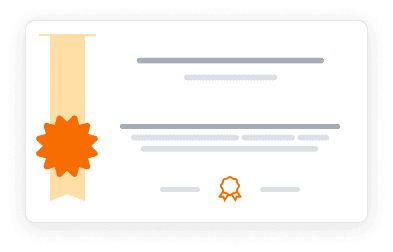This course is part of Business Statistics and Analysis Specialization.
This course cannot be purchased separately - to access the complete learning experience, graded assignments, and earn certificates, you'll need to enroll in the full Business Statistics and Analysis Specialization program. You can audit this specific course for free to explore the content, which includes access to course materials and lectures. This allows you to learn at your own pace without any financial commitment.
4.8
(1,319 ratings)
36,916 already enrolled
Instructors:
English
پښتو, বাংলা, اردو, 2 more
What you'll learn
Construct and interpret confidence intervals for business decision-making
Calculate appropriate sample sizes for various business research needs
Perform hypothesis tests for population means and proportions
Distinguish between and apply single-tail and two-tail hypothesis tests
Understand and minimize Type I and Type II errors in statistical analysis
Conduct difference-in-means tests using appropriate approaches for various scenarios
Skills you'll gain
This course includes:
3.9 Hours PreRecorded video
27 assignments
Access on Mobile, Tablet, Desktop
FullTime access
Shareable certificate
Get a Completion Certificate
Share your certificate with prospective employers and your professional network on LinkedIn.
Created by
Provided by

Top companies offer this course to their employees
Top companies provide this course to enhance their employees' skills, ensuring they excel in handling complex projects and drive organizational success.





There are 4 modules in this course
This comprehensive course provides essential training in confidence intervals and hypothesis testing for business applications. The curriculum begins with a foundational understanding of the t-distribution and introduces statistical concepts like t-statistics and z-statistics as building blocks for constructing confidence intervals. Students learn how to interpret confidence intervals and apply them to business scenarios, including calculating appropriate sample sizes and estimating population proportions. The course then transitions to hypothesis testing, teaching the four-step process for conducting tests and distinguishing between single-tail and two-tail approaches. Special attention is given to understanding Type I and Type II errors and strategies to minimize them. The final module focuses on difference-in-means tests across various scenarios, including equal variance, unequal variance, and paired sample tests. Throughout the course, concepts are reinforced through practical business applications using Microsoft Excel, emphasizing how these statistical tools can enhance business decision-making by quantifying risk and uncertainty.
Confidence Interval - Introduction
Module 1 · 6 Hours to complete
Confidence Interval - Applications
Module 2 · 4 Hours to complete
Hypothesis Testing
Module 3 · 6 Hours to complete
Hypothesis Test - Differences in Mean
Module 4 · 7 Hours to complete
Fee Structure
Individual course purchase is not available - to enroll in this course with a certificate, you need to purchase the complete Professional Certificate Course. For enrollment and detailed fee structure, visit the following: Business Statistics and Analysis Specialization
Testimonials
Testimonials and success stories are a testament to the quality of this program and its impact on your career and learning journey. Be the first to help others make an informed decision by sharing your review of the course.
Frequently asked questions
Below are some of the most commonly asked questions about this course. We aim to provide clear and concise answers to help you better understand the course content, structure, and any other relevant information. If you have any additional questions or if your question is not listed here, please don't hesitate to reach out to our support team for further assistance.



